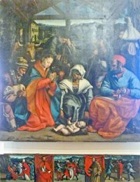

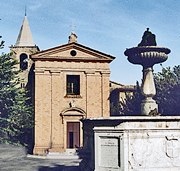
In 1265, the Benedictines of the Abbazia di San Crispolto moved the relics of St Crispoltus to a new church on this site within the city walls. The canons of Santa Maria Maggiore, who owned the site, objected but Cardinal Giacomo Savelli (the future Pope Honorius IV) was able to negotiate a compromise, whereby the right of Santa Maria Maggiore as the parish church of Bettona were preserved and the donations received on the feast of St Crispoltus were shared between the two churches.
More serious were the objections from Assisi, whose Franciscan bishop, Nicolò da Calvi had rights over the abbey. He placed Bettona under interdict, and an invasion by Assisi seemed imminent. Both sides appealed for aid to Perugia, and it was through the good offices of the Perugians and of Cardinal Giacomo Savelli, that a compromise was reached: the relics remained in San Crispolto, but the Benedictines transferred it to the Franciscans. This group of friars, who had settled at the ex-nunnery of Santa Caterina (another of the abbey’s possessions) in 1239 duly moved here and subsequently extended the church and convent.
The Perugians stole the relics in 1352, when they sacked the city, but the papal legate, Cardinal Gil Albornoz insisted on their return in 1367.
The complex passed to the Observant Franciscans in 1415, and they remained here until 1494.
In 1638, the remains of two bodies were found in an urn under the high altar of the church.
The church has been re-modelled on a number of occasions, most recently in 1795-7. The Bishop of Assisi re-consecrated it in 1801.
Exterior
The facade, which is the work of the Roman architect, Antonio Stefanucci, dates to the restoration of 1795-7.
The campanile survives from the original structure.
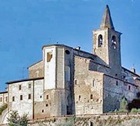
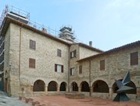
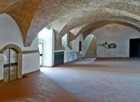
Interior
The arms of the Baglioni family are on the ends of the high altar.
The organ (1564) is by Cianciulla Romani of Cortona.
St Crispoltus (18th century)
This silvered copper reliquary bust is the work of a local artisan, Crispolto Mariani. It is preserved in the left apsidal chapel of San Crispolto.
Scenes from the life of St Crispoltus (1797)
These frescoes on the walls of the left transept are copies of the original cycle (ca. 1615) of 36 scenes by Cesare Sermei. When it was decided that the originals should be destroyed during the restoration of the church in 1797, the friars commissioned these faithful copies from Stefano Notari. The original designs by Sermei survive in Assisi.
Art from the Church
St Joseph (1667)
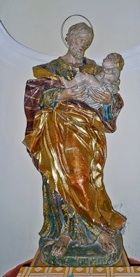
Works in the Pinacoteca Comunale
The following are now in the Pinacoteca Civica.
Crucified Christ (ca. 1470)
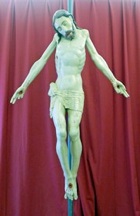
The figure has been associated with four panels of angels with instruments of the Passion, which came from a tabernacle in San Francesco al Prato and are now kept in the deposit of the Galleria Nazionale, Perugia. If this is correct, then all of these components came from a tabernacle that was financed by a bequest of 1470. This was designed to commemorate Angelo del Toscano, who had been the Minister General of the Franciscans from 1450 until his death in 1453. The sculpture has been attributed to Agostino di Duccio, who lived in Perugia in the period 1473-81.
St Michael (15th century)
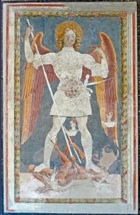
Adoration of the Shepherds (1543)
-
✴The main panel depicts the Virgin, an elderly nurse and St Joseph together with three shepherds, kneeling in a semi-circle behind the baby Jesus, who lies on the floor of the stable in which He was born.
-
✴The predella contains scenes from the life and martyrdom of St Crispoltus.
Immaculate Virgin with Saints (17th century)

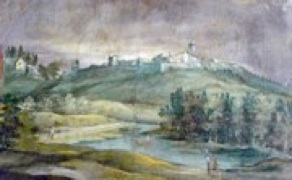
This altarpiece was documented in the Cappella del Santissimo Sacramentoin the 18th century. It depicts the immaculate Virgin with SS Crispoltus and Francis. It has been attributed to Cesare Maggeri, a close follower of Federico Barocci. The lower part of the scene is set against a lovely townscape of Bettona, in which the San Crispolto is on the right the Convento di Sant’ Antonio da Padova is outside the walls, on the left.




